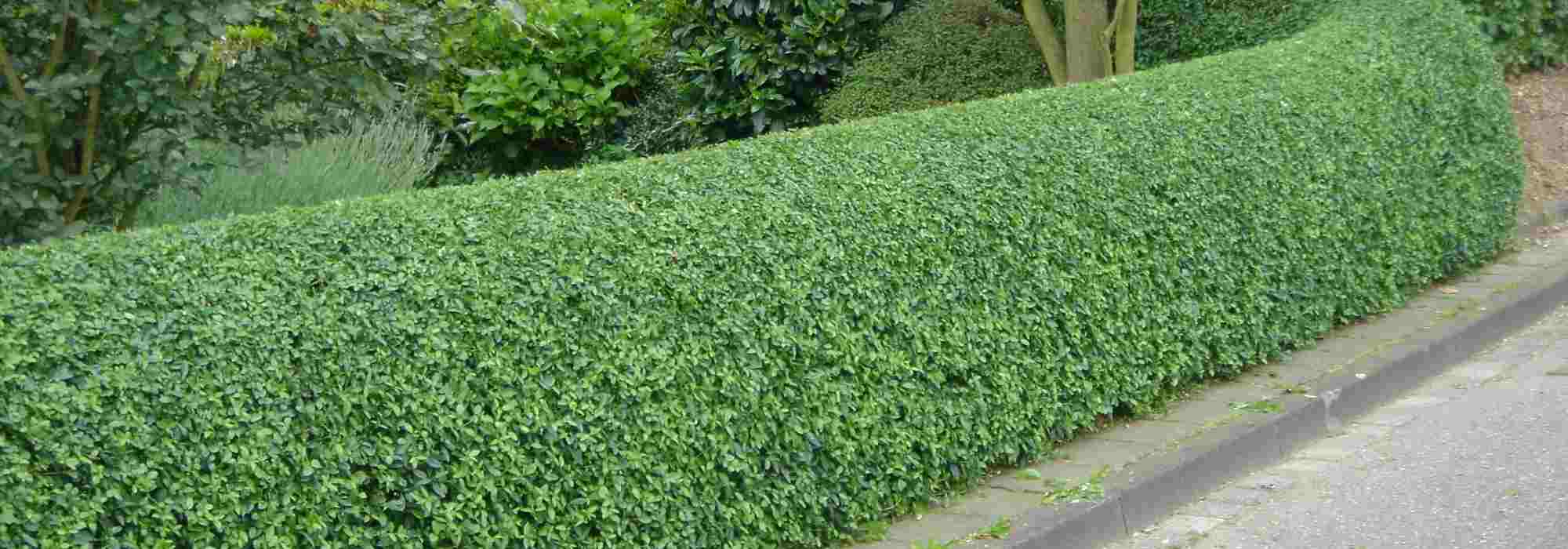
Pruning of privet
When and how to prune privet?
Contents
Privet (or Ligustrum) with evergreen foliage and fast growth, is mainly used for hedging in gardens. For this use, it requires harmonious and regular pruning. It is an easy bush that tolerates repeated pruning very well. To obtain a dense, well-ramified hedge to your liking, or to create shaped silhouettes, you’ll need to use your pruning tools more or less regularly. Unless you let it develop freely to enjoy its lovely scented flowering and melliferous qualities.
Here are some tips to better understand privet pruning needs and when to prune.
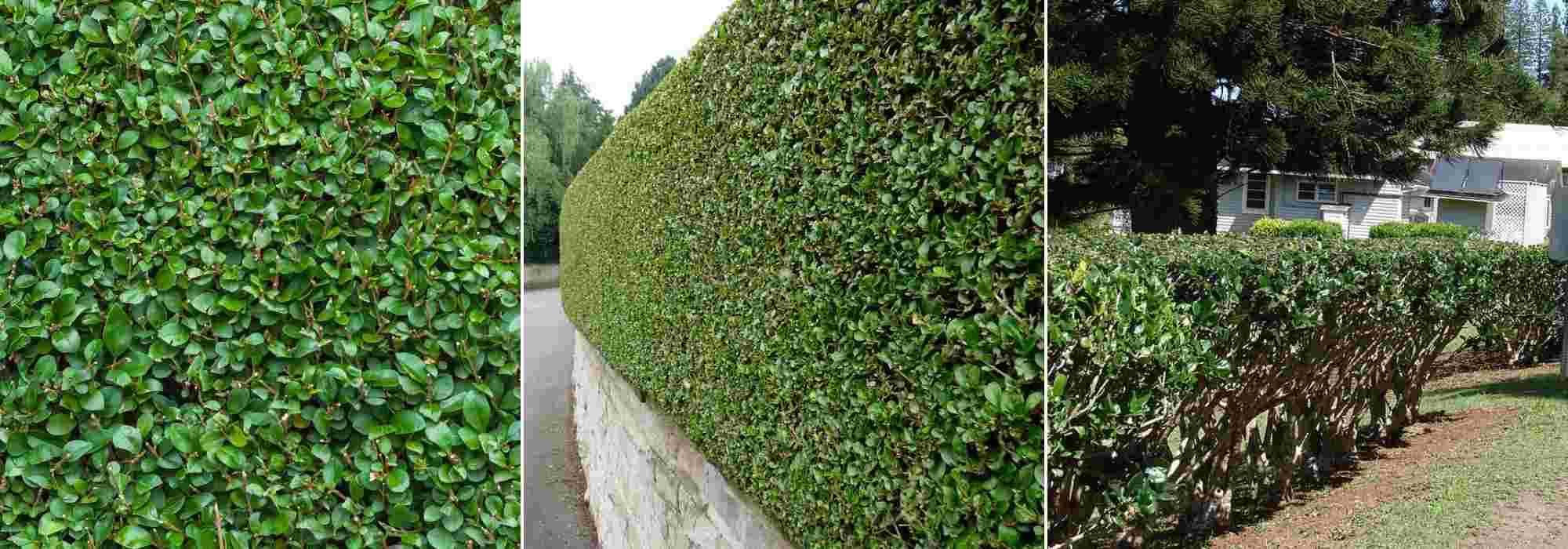
A privet freshly pruned and a perfectly straight hedge. To the right, privets becoming bare at their base (© Forest and Kim Starr).
→ Find out more about privet with our complete fact sheet
To prune or not to prune?
That is the question! It actually depends on your tastes and on the style of your garden.
Do not prune if you want to enjoy privet’s beautiful, melliferous and fragrant flowering, and if your garden has a natural, country or even English style. Your privets can then be used in informal hedges, in borders, or even as specimen plants. They thus help create biodiversity that is very useful in the garden when planted in mixed informal hedges (multi-species hedges). You can prune them occasionally to control their size or the shade they provide, about once every two years.
For maintenance of a trimmed privet hedge, knowing that the bush is fast-growing and can reach up to 3 m high for some varieties, you will need to carry out thinning of branches and enhance its structure regularly to achieve a satisfactory result.
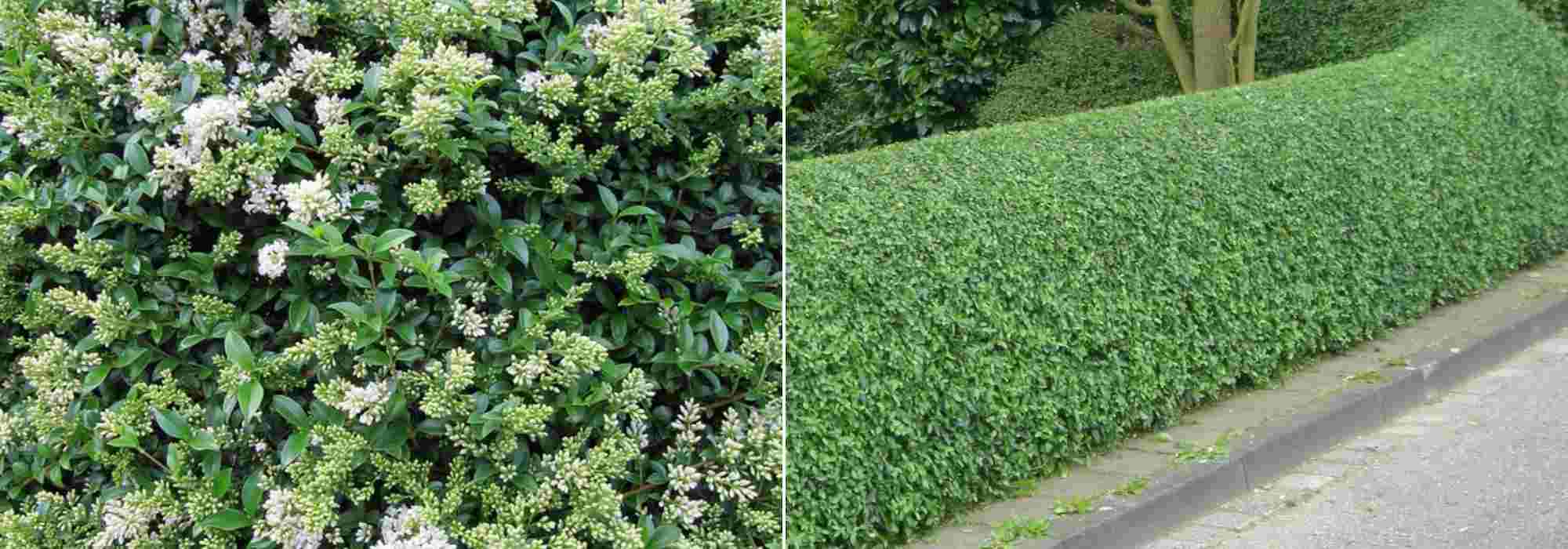
Privet left untrimmed in summer flowering (Photo : L. Enking), and a trimmed hedge of common privet ‘Atrovirens’
When to prune a privet?
Act before growth resumes, in late winter or very early spring. Ideally from February to March, as this is peak period of rising sap. For a young hedge, you will obtain rapid growth. If you prune after the flowering that you have chosen to keep throughout summer, do so in late autumn (but not later). A pruning at that time will tend to somewhat slow the growth of your privets since you are working during period of descending sap.
Regular pruning throughout the year helps privets of semi-evergreen varieties retain their leaves for longer.
Pruning frequency actually depends on the variety of your privets : ‘Rotundifolium’ and delavayanum are slow-growth and require only one pruning per year, whereas Ligustrum japonicum needs to be pruned two or three times because of its rapid growth.
If you want a hedge clipped to a neat, straight line (« au cordeau »), take out your shears twice between spring and early summer.
Discover other Ligustrum - Privet
View all →Available in 2 sizes
Available in 3 sizes
Available in 2 sizes
Available in 1 sizes
Available in 1 sizes
Available in 1 sizes
Available in 7 sizes
Available in 1 sizes
Available in 5 sizes
Available in 1 sizes
How to prune a privet?
- Formative pruning, while still young: This is a crucial period for creating bushes dense from their base that will form attractive hedges. Privet being a strongly acrotonous bush (it carries out its branching from upper part of the shoots), it is essential to force it to produce shoots at its base to thicken it up! Otherwise it behaves like a small tree (and may become one if left unpruned). For this, at planting, cut back your plants to 30 cm above soil. Repeat this operation twice during the year, pruning each time to about 40 cm above the new shoots.
- In maintenance pruning, you must take care to maintain a neat habit in your privets that form your hedge. For this, prune dead wood, diseased shoots and shoots that cross or grow inward to encourage new shoots. If your hedge is tall, use a scaffold. Work with a large shear or a hedge trimmer if dimensions of your hedge require it. You can prune a second time during summer, using pruning shear lightly. This will simply be to even up and preserve a tidy shape to your hedge.
- Pruning a privet hedge that is thinning: this is typical case of ageing bushes, poorly or never maintained, which were not pruned early enough and have lost density at their base. In this specific case there is no other solution than to carry out a complete coppicing, that is an exceptional cutting back of shoots down to the stump: the vigorous branching characteristic of privet will allow density to be regained within a few months, which should be followed by another pruning to stimulate new branching at pruning points. After 2 years your hedge will begin to regain splendour, and after 3 years it is almost as good as new!
Read also
Privet or Ligustrum: buyer's guideAtypical pruning
Privet, because of its ability to rebud very easily, is ideally suited to pruning as topiary, which requires regular interventions throughout the year for a neat result, and to the specific pruning of bonsai.
- Topiary and Niwaki
You can actually prune at almost any time of year, since for topiary and other niwaki (or cloud pruning) this is a sophisticated, light pruning performed right at shoot tips to achieve a very neat appearance. You will use a shear for large specimens, and a pruning shear for small spheres formed on standard-stem plants such as Ligustrum delavayanum. Note that Ligustrum ‘Rotundifolium’ grows slowly and is well suited to this type of shaping.
> learn more about the cloud pruning or niwaki technique
- Bonsai
Certain varieties of Ligustrum are suitable (mainly Ligustrum sinense or Ligustrum ovalifolium), and are readily available commercially. Pruning is carried out with bonsai scissors three times a year, between February and October. Repeated pruning keeps small leaves on privet bonsai by removing shoots that grow too vigorously. Pinch back to three leaves and wherever leaves start to enlarge.
Privet pruned as topiary at house entrance (Photo : Cultivar413), and in bonsai form
- Subscribe!
- Contents
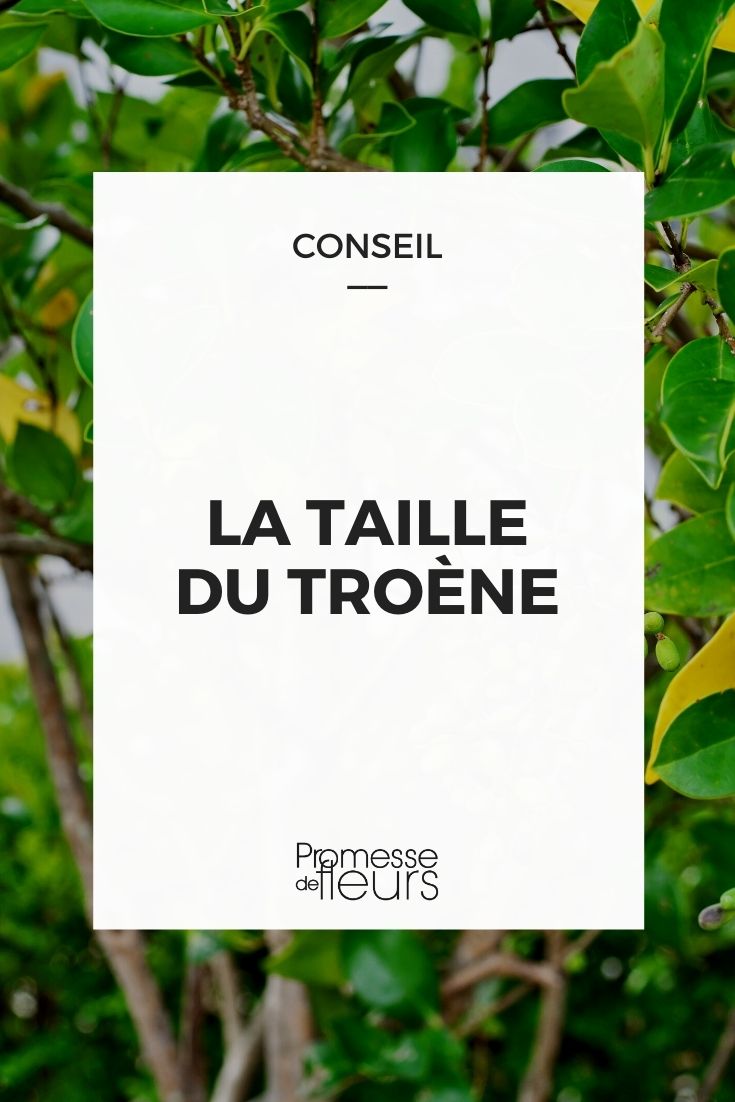
































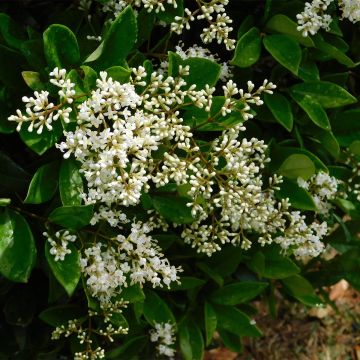
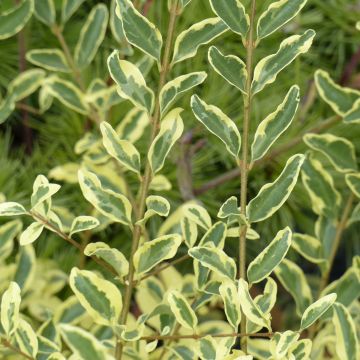
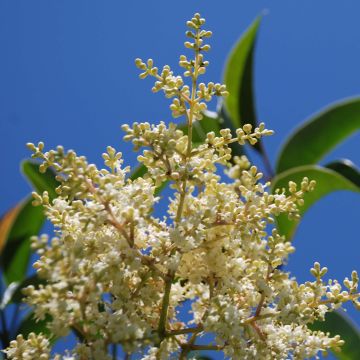
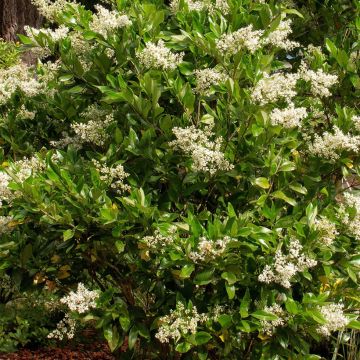
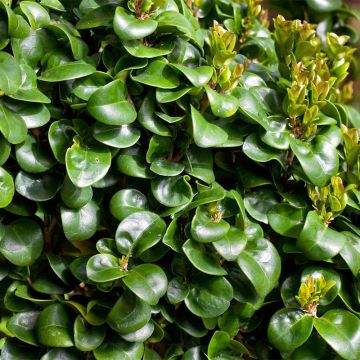
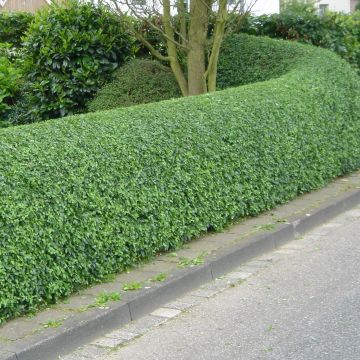
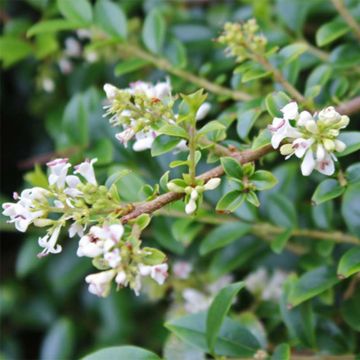
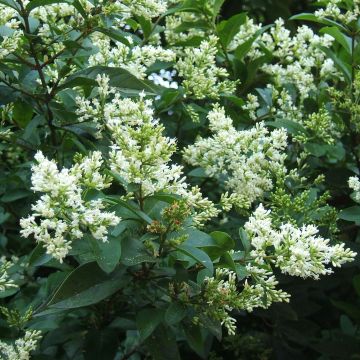
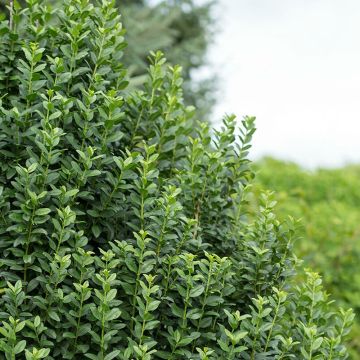
Comments